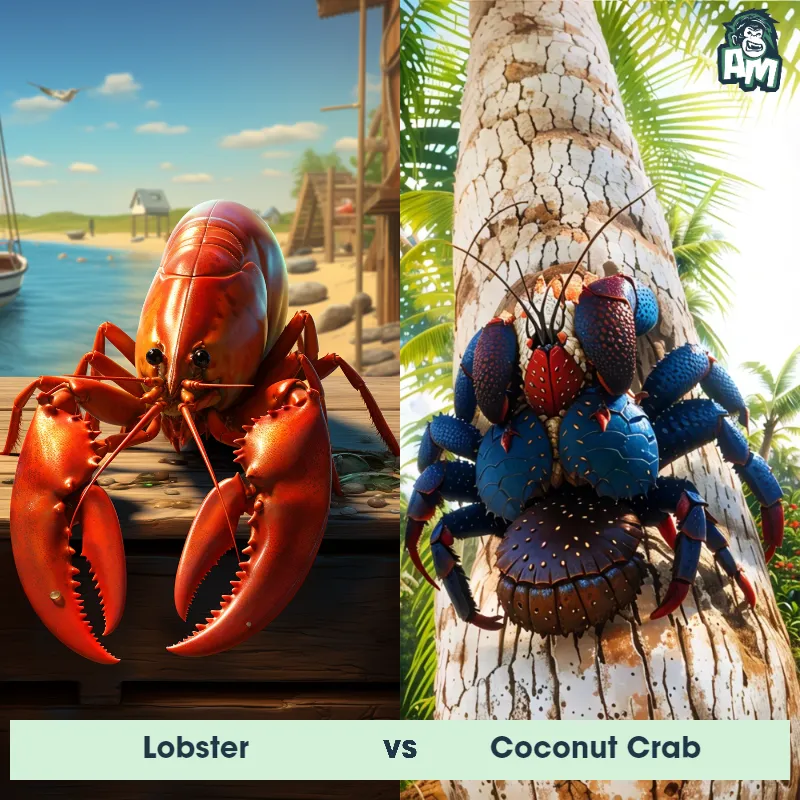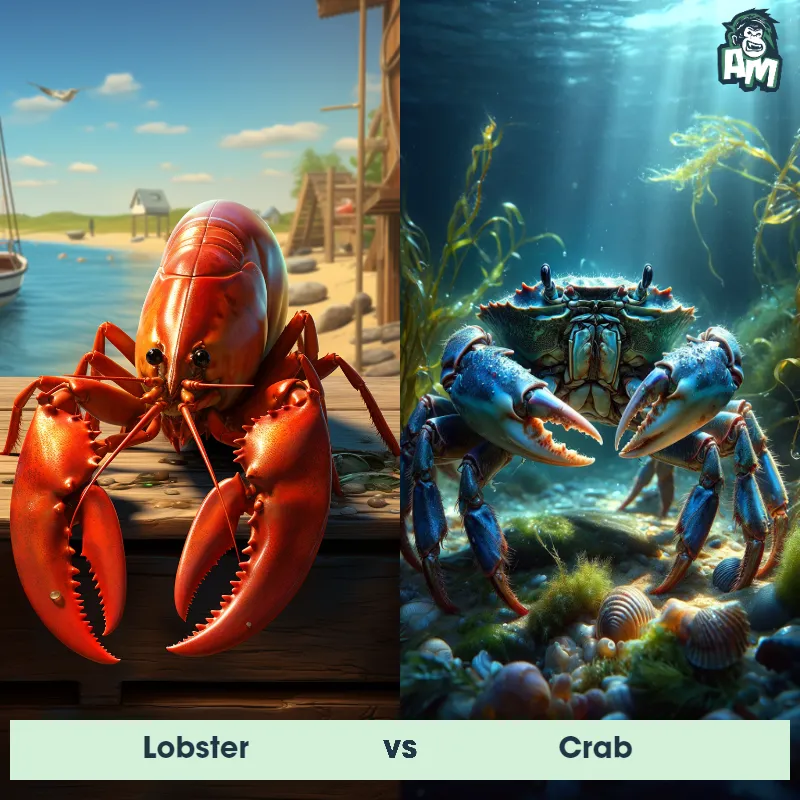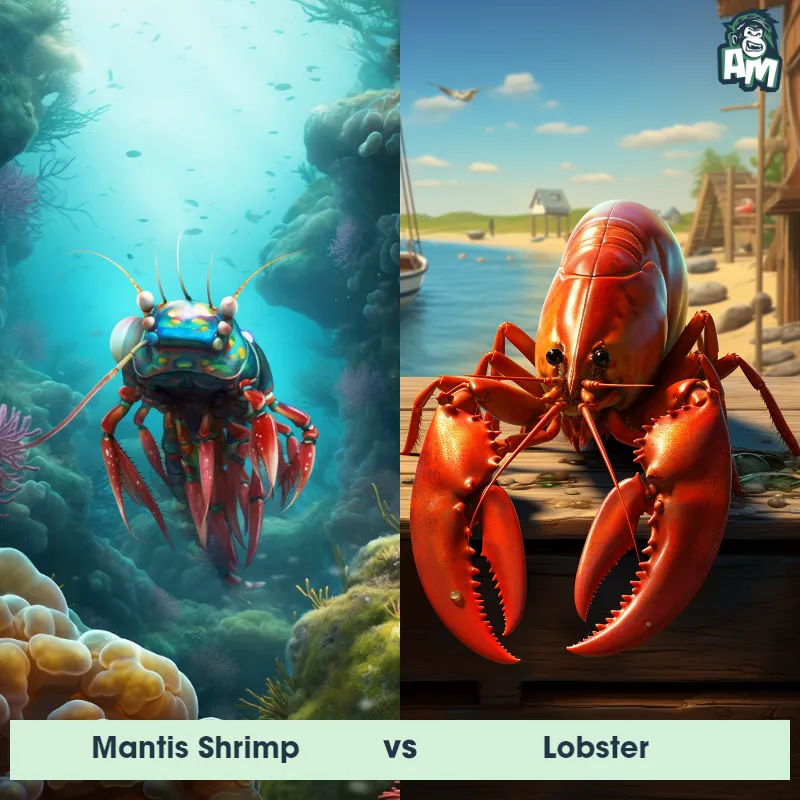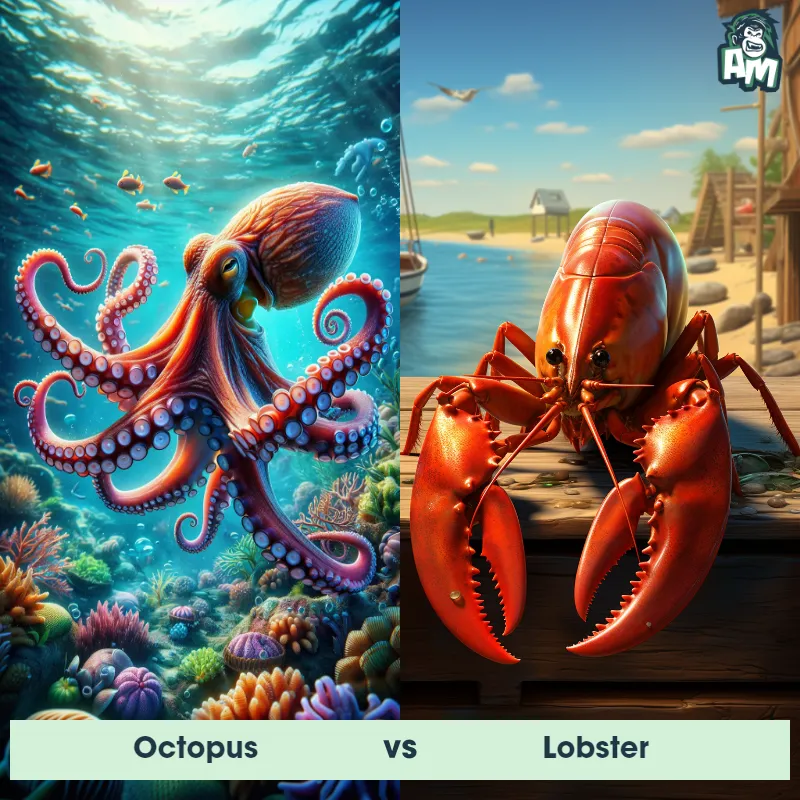The Lobster
The lobster is a crustacean known for its distinctive appearance and delicious taste. It has a hard exoskeleton that protects its soft body, with two large front claws used for catching prey and as a means of defense. Lobsters have long, segmented bodies that can reach up to 25 inches in length, and their coloration can vary from dark brown to vibrant shades of blue and red. They dwell at the bottom of the ocean, hiding in crevices and rocky areas, and are prized by humans for their succulent meat.
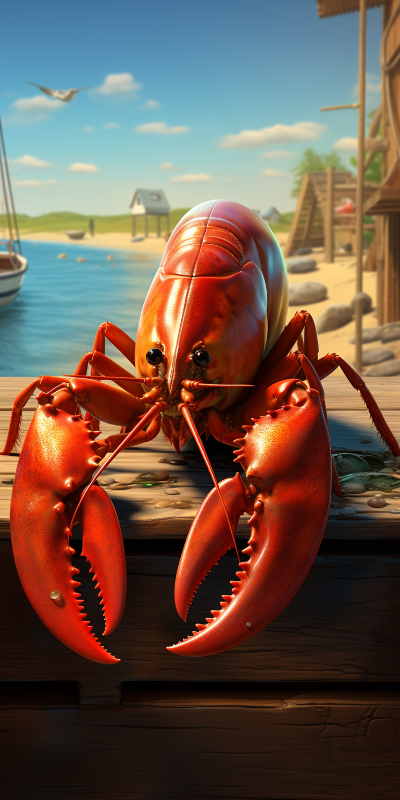
| Lobster | |
|---|---|
| Size | Up to 3.25 feet (1 meter) |
| Weight | Up to 44 pounds (20 kilograms) |
| Speed | 11mph (18km/h) |
| Key Strength | Strong, large claws for hunting and defense |
| Biggest Weakness | Vulnerable soft body during molting period |
| Scientific Name | Homarus americanus |
| Family | Nephropidae |
| Habitat | Ocean floors, rocky, sandy, or muddy areas |
| Geography | Atlantic Ocean, particularly North America's east coast |
| Diet | Fish, mollusks, other crustaceans, worms, and some plant life |
| Lifespan | 50 years - 100 years |

The Lobster
The lobster is a crustacean known for its distinctive appearance and delicious taste. It has a hard exoskeleton that protects its soft body, with two large front claws used for catching prey and as a means of defense. Lobsters have long, segmented bodies that can reach up to 25 inches in length, and their coloration can vary from dark brown to vibrant shades of blue and red. They dwell at the bottom of the ocean, hiding in crevices and rocky areas, and are prized by humans for their succulent meat.
Fun Fact: Lobsters have a unique ability to regenerate lost limbs, which means that if they lose a claw or a leg, they can grow a new one over time.
| Lobster | |
|---|---|
| Size | Up to 3.25 feet (1 meter) |
| Weight | Up to 44 pounds (20 kilograms) |
| Speed | 11mph (18km/h) |
| Key Strength | Strong, large claws for hunting and defense |
| Biggest Weakness | Vulnerable soft body during molting period |
| Scientific Name | Homarus americanus |
| Family | Nephropidae |
| Habitat | Ocean floors, rocky, sandy, or muddy areas |
| Geography | Atlantic Ocean, particularly North America's east coast |
| Diet | Fish, mollusks, other crustaceans, worms, and some plant life |
| Lifespan | 50 years - 100 years |
Lobster Matchups
We use AI to simulate matchups between the Lobster and other animals. Our simulation considers size, strength, and natural predatory behaviors to determine the most likely outcome.

Can't find the Matchup you want?
Create Your Own MatchupLobster: Diet, Predators, Aggression, and Defensive Behaviors
What do lobsters eat?
Lobsters are omnivores, feeding primarily on small fish, mollusks, other crustaceans, and sometimes algae or plant matter. They are also known to scavenge for food on the ocean floor, particularly when food is scarce. Some lobsters have even been observed cannibalizing each other if necessary.
Do lobsters have any predators?
Despite their tough exoskeletons and spiky defenses, lobsters are hunted by a variety of predators in the ocean. Some of their main predators include large fish such as cod, eels, and sharks, as well as seals and sea otters. Humans are also a significant predator of lobsters, catching them for consumption.
Are lobsters aggressive?
Lobsters are not typically aggressive towards humans or other animals unless they feel threatened or provoked. In fact, lobsters are generally solitary creatures that prefer to keep to themselves and avoid conflict whenever possible. However, they can become territorial and exhibit aggression towards other lobsters over food or mating opportunities.
Do lobsters fight?
Yes, lobsters will engage in combat with one another, particularly when competing for mates or territory. These fights can involve claw-to-claw combat, where the lobsters use their sharp claws to try to intimidate or injure their opponent. The larger and more dominant lobster usually emerges victorious in these battles.
How do lobsters defend themselves?
Lobsters have several defense mechanisms to protect themselves from predators and rivals. Their primary defense is their tough exoskeleton, which provides them with a strong protective shell. In addition, lobsters have powerful claws that they can use for both defense and offense. They can also squirt water from their mouths or whip their tails to deter threats.
What is the biggest weakness of lobsters in a fight?
The biggest weakness of lobsters in a fight is their vulnerable underbelly. Unlike their tough exoskeletons on their top side, the underside of lobsters is softer and more exposed. If a lobster is flipped over onto its back during a fight, it becomes much more vulnerable to attacks from predators or rival lobsters.
Fun Fact: Unlike most animals, lobsters do not age in the traditional sense – they exhibit a phenomenon known as "negligible senescence," meaning they show no signs of aging and can potentially live indefinitely, provided they avoid disease, predation, or other external factors.
Fun Fact: Lobsters communicate using complex gestures and movements. They use their antennas and appendages to signal aggression, submission, and courtship rituals, making them surprisingly intricate in their social interactions.



